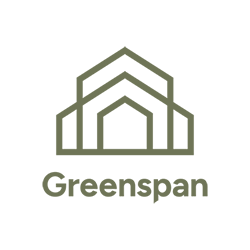What is Exempt Development in NSW and ACT?
Some types of home renovations and minor building projects don’t need approval from a Council or accredited certifier. This is called exempt development.
Exempt development is very low-impact development that can be done for certain residential, commercial and industrial properties. It means that, providing your building project meets specific development standards, approval from your council or planning authority is not needed.
A few examples of development that can be considered exempt development are adding decks, garden sheds, carports, fences, repairing a window or painting a house.
See planning.nsw.gov.au or planning.act.gov.au. If you are looking for information on Exempt Development in other Australian states and territories click here.
Is my NSW or ACT property eligible for Exempt Development?
Although most properties in NSW and ACT could be eligible for exempt development, some land is specifically excluded from exempt development provisions. If your proposed development location falls under any of the following categories it may be excluded from exempt development provisions.
- Heritage listed property
- Environmentally sensitive land
- Land mapped in Schedule 4 as land excluded from the General Exempt Development Code (to view the maps/Schedule 4 click here)
- Land on your property that falls between a foreshore building line and the corresponding waterline
Most NSW and ACT property details can be checked using the NSW Planning Portal and ACTmapi viewer or by purchasing a planning certificate from your local council/planning authority. If in doubt, we recommend contacting your local council or planning authority and asking what size shed or cabana you can put in as exempt development.
In all cases, you should consult your local council or town planner before proceeding with any proposed works that you wish to carry out as exempt development:
Which Melwood products are available for Exempt Development in NSW and ACT?
Most councils will allow a *Class 10a non-habitable structure to be installed without requiring approval, as long as it meets the property specific standards that also need to be complied with when intended for exempt development in NSW and ACT.
*The BCA (Building Code of Australia) notes a Class 10a Building as a non-habitable building including sheds, carports, and private garages.
Some examples of these standards are:
NSW
- floor area not exceeding 20m²
- 900mm setback from boundaries on residential zoned land
- no more than 3m above existing ground level
- no more than two such developments per lot
- be located at least 1m from any registered easement
Please visit NSW Legislation website or your local council for a full list of conditions.
ACT
- the roof plan area is not more than 25m² (however if the block size is not more than 500m², a max plan area of 10m² applies)
- it is behind the building line (if it has a plan area of more than 10m², it also must be at least 15m from the block’s front boundary)
- no more than 3m above ground level
- the floor level is not more than 1m above ground
- the building is enclosed by a roof and has walls on every side, or every side except one
Please visit ACT Department of Planning website for a full list of conditions.
What if my NSW property is identified as bushfire-prone land?
Point 2.18(1)(i) of the NSW Exempt Development Code states that if the proposed structure is located on bushfire-prone land and is less than 5m from a dwelling it must be constructed of non-combustible material.
If you are unable to locate the structure more than 5m from any dwellings then you will need to upgrade the structure to non-combustible material.
Can I use a non-habitable structure as a granny flat or secondary dwelling?
No. Granny flats and secondary dwellings are considered habitable buildings and a non-habitable structure cannot be used as a granny flat or secondary dwelling.
Do you need an approved granny flat or habitable structure? Talk to us about our studio and granny flat products and how we can assist you with your complying development or council consent requirements.
Where can I find the full list of Exempt Development Standards?
The standards you must comply with for exempt development works are set out in the exempt development legislation for your state or territory. The full policy and list of standards for your state or territory can be viewed here at the following links:
What if my property or particular application doesn’t meet Exempt Development requirements?
Some properties or applications require specific approvals and solutions. For information regarding the planning requirements of your proposed development, we always recommend contacting your local council or an appropriately qualified and experienced professional such as a town planner or accredited certifier.
We offer a wide range of prefabricated lifestyle space solutions, from storage sheds to fully compliant granny flats with the necessary habitable upgrades.
Building and engineered product drawings are available for purchase should they be required while obtaining development/planning approval.
Further information
Further reading on exempt development in NSW and ACT, along with the requirements for other Australian states and territories, can be found below.
It’s fast and easy to get a personalisable, backyard cabana, garden room or shed with a PreCrafted building from Greenspan.
Already downloaded our Design Price Guide and ready to take the next step?
Let’s meet. Book a callback from one of our friendly team.
